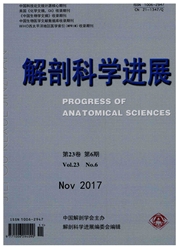

 中文摘要:
中文摘要:
诱导性多能干细胞(induced pluripotent stemcells,iPS)是通过转录因子诱导的体细胞重编程建立的,它与胚胎干细胞具有共同的发育多潜能性及在细胞替代治疗上潜在的应用前景。然而,转录因子调节的重编程过程是一个复杂而漫长的过程,涉及大量、未知的分子及表观事件,而且产生的iPS细胞发育潜能差异较大。对其重编程机制的揭示,将有助于获得更高效、安全的iPS细胞,为最终实现应用于人类疾病的治疗提供理论依据。本文关注了近几年转录因子调节的重编程分子机制的研究,阐述了重编程过程中转录与表观的变化。
 英文摘要:
英文摘要:
Induced pluripotent stem cells(iPS) are generated by ectopic expression of transcription factors, iPS cells were similar to embryonic stem cells derived from the fertilized embryo in developmental potential and application of cell replacement therapy. However, conversiort of somatic cells to pluripotency by defined factors is a long and complex process that yields iPS cells varied in their de~elopmental potential. Multiple unknown molecular and epigenetic products may be involved in reprogramming process. Understanding the mechanisms that underlie somatic cell reprogramming to pluripotency is crucial for the creation of high--quality pluripotent cells and may be useful for therapeutic applications. In this review, we focus on recent studies aimed at the molecular mechanisms of cellular reprogramming mediated by transcription factors.
 同期刊论文项目
同期刊论文项目
 同项目期刊论文
同项目期刊论文
 期刊信息
期刊信息
